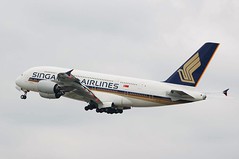 Image via Wikipedia
Image via Wikipedia Airlines are finding innovative ways these days to engage the customer in the online world. Singapore Airlines organized an online design competition for their A380 launch flights to London. Malaysia Airlines keeps an active blog written by a number of their employees. JetBlue Airways follows its customers on Twitter! Now, the oldest big daddy of budget airlines, Southwest, has capitalized on its own popular blog to launch a blogging competition. The winner gets to blog on the official Southwest blog alongside Christi Day, its current author. What a great way to engage the customer.
You submit, you vote, you win!
Till the end of August, customers can submit a one-minute audition video on the official website and fellow customers will be able to view all video submissions and vote for their favorites. The top three ranked submitters will be invited to Las Vegas at the BlogWorld Expo in September and be given secret video assignments to complete. These will then be uploaded on the website as well, and customers will vote to choose a winner. How democratic!





